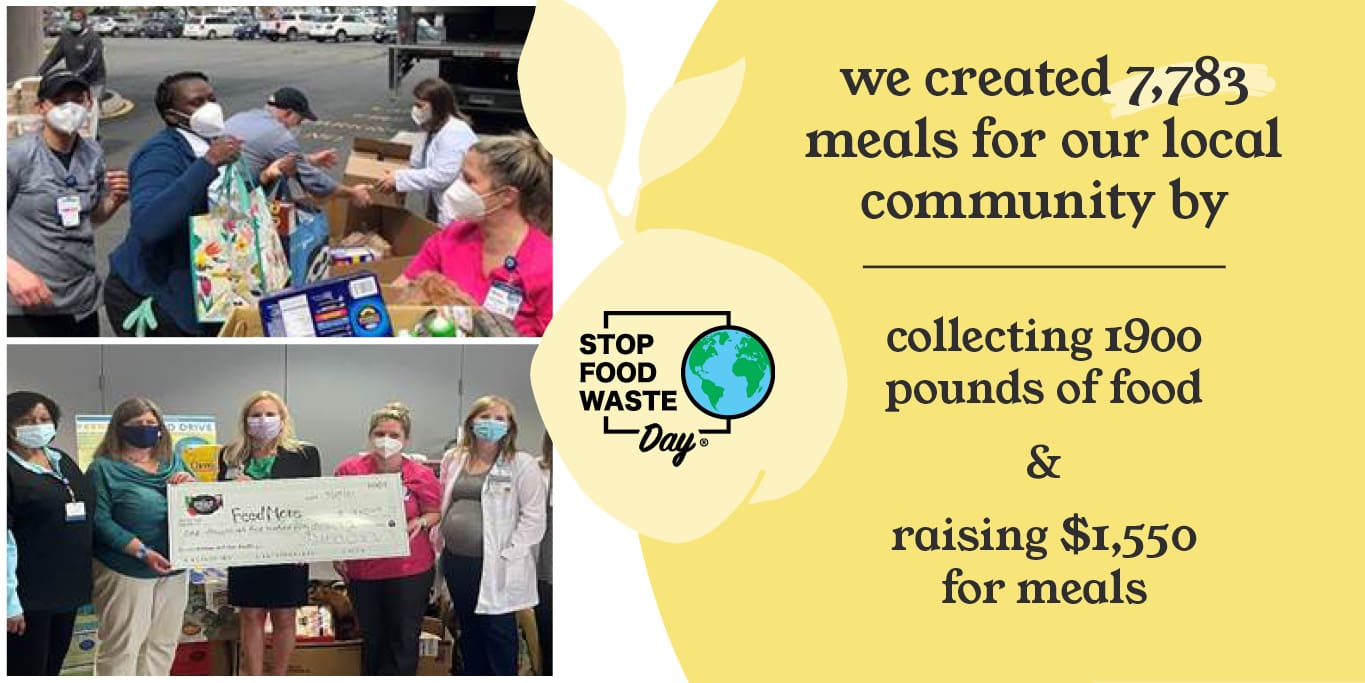Moving the Needle: Stopping Food Waste in Hospitals
It is a problem that continues to plague the U.S. Approximately 40 percent of food produced in this country is wasted. That’s a staggering figure that should cause everyone to pause.
Almost 70 percent of retail food waste comes from consumer plates. Just think about the situation in hospitals and how often trays of food are tossed out partially eaten or uneaten from a patient’s room. There is a cost to this and an opportunity.
“One in six Americans is categorized as food insecure, many of them children,” said Heather Farkas, wellness and sustainability corporate support manager for Morrison Healthcare. “We can do a better job providing support to our communities while reducing waste to the landfill. Our efforts can positively impact population health and environmental health.”
To coincide with Stop Food Waste Day on April 28, we are examining strategies to eliminate food waste. Morrison Healthcare’s (MHC) parent company, Compass Group, has set an ambitious goal to reduce food waste by 50 percent by 2030. To make that happen, MHC’s teams will be focused on three key areas to move the needle.
Education
Food waste can be expensive for a hospital and its community. It is critical for hospitals to educate their peers and patients about the opportunity and best practices. Most health systems have developed standards and processes that relate to food forecasting, purchasing, production, menu planning, and storage. These standards are designed to minimize food waste and cost while improving efficiencies. By making sure teams within a hospital understand the importance of adhering to these guidelines, hospitals can make an impact on food waste—and ultimately their bottom line.
There is also an opportunity to create education programs for the community. Stop Food Waste Day is a great example. The program includes numerous initiatives that expand knowledge for patients, providers, and communities. A few programs for 2021 include:
- Teaching Kitchen Curriculum—teaches useful techniques to optimize foodservice and reduce waste
- Recipe Cards—provides recipes using food ‘root to stem’ instead of throwing it away
- Culinary Approach—tips for limiting and avoiding food waste
- Stop Food Waste Day Virtual Event—celebration and education opportunity to drive awareness
Additionally, MHC clients and foodservice managers can utilize the “Becoming a Food Waste Champion” training to get their teams on the cutting edge of techniques and strategies for reducing food waste.
By educating their teams and communities, hospitals can make a tangible impact on food waste while also improving their bottom line.
Reduction
As part of educational campaigns, hospitals need to develop tools and programs that directly attack food waste. Reduction serves as the greatest opportunity to make an impact.
As a result, MHC’s Waste Not 2.0 tool leverages technology and analytics using a tablet to track and record food waste types, amounts, and ultimate destination (e.g., donation, composting, and landfill). Through this data, hospitals receive valuable insights to create new strategies and address food waste at the source.
“Waste Not 2.0 is the next generation waste reduction tool,” said Farkas. “By utilizing this technology, we can easily identify avoidable waste and take immediate action to reduce it.” Since Waste Not 2.0 was created, hospitals who have adopted the program have seen food waste reductions as much as 50 percent. That can have a significant impact on food costs. Beyond the finances, MHC has seen increases in employee engagement coupled with Waste Not 2.0. Associates like to feel good about the work they are doing. The program empowers them to make a difference at their facility and within the community.
Donation
Inevitably there will be some food waste at a hospital. We should continue to work to reduce that waste, while having a strategy in place for what gets left behind.
MHC has worked with hospitals around the country to secure food donation pipelines that create a major impact on the community. A few examples:
- Two California hospitals have teamed up on a food donation program. Marian Regional Medical Center and Alta Bates Summit Medical Center have surpassed their food donation goals. Since 2018, the hospitals have donated more than 311,000 lbs. of food, which equates to 265,839 meals.
- At Bon Secours Memorial Regional Medical Center, their 4th Annual National Nutrition Month Food Drive yielded 1,900 lbs. of food donations. That equates to 1,583 meals. Along with cash donations, the hospital provided 7,783 meals.

While we should always look to reduce food waste, these donation programs provide two remarkable examples of hospitals turning waste into benefit for their communities.
Hospitals are doing amazing work to eliminate food waste. It’s a journey that will continue in the coming years. With the right partner, hospitals can use data to create programs that provide the most impact to their finances and community.




